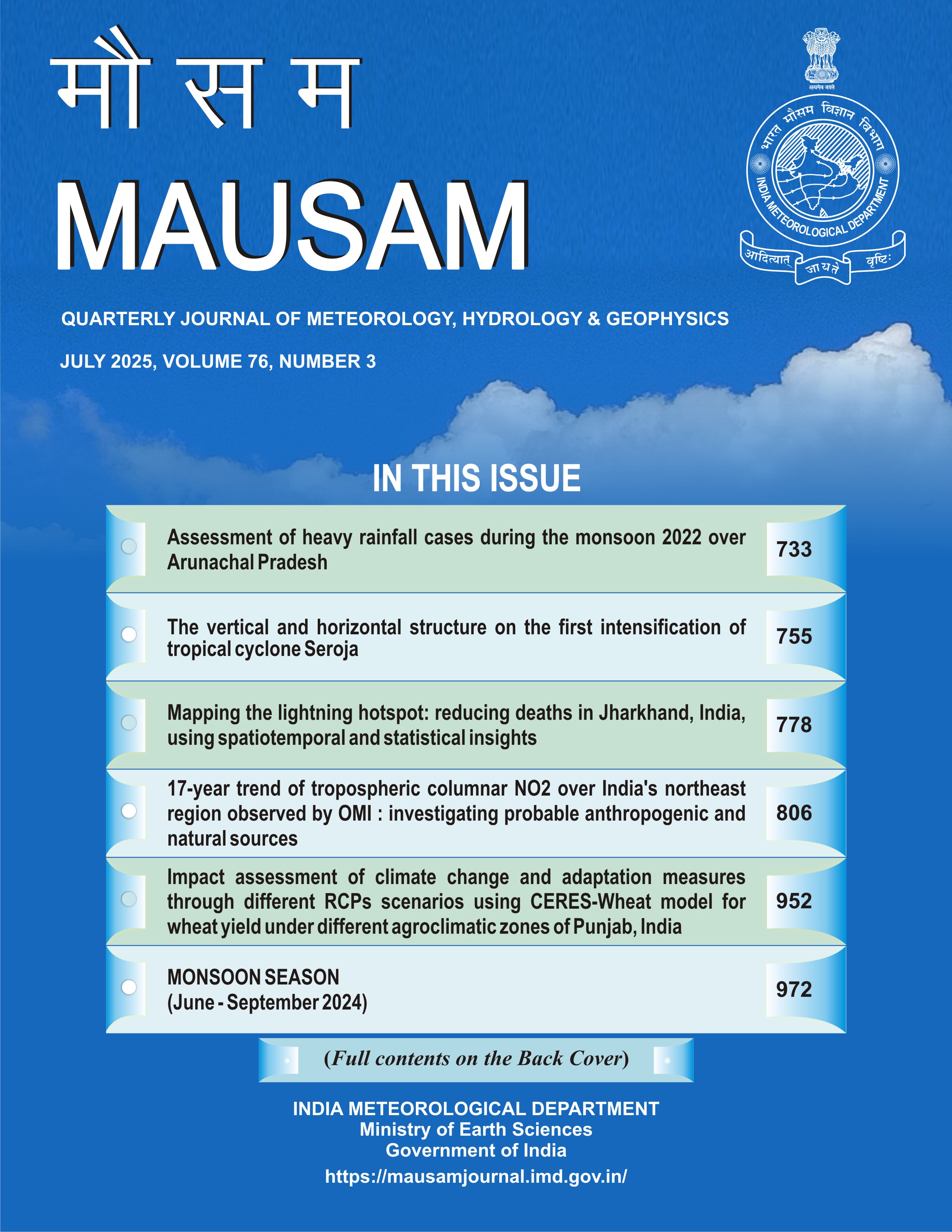Source characterisation of June 2023 Doda (Kashmir) earthquake
DOI:
https://doi.org/10.54302/mausam.v76i3.6684Abstract
On the 13th of June 2023, at 13:33:42 IST, an earthquake of magnitude Ml5.1 occurred in the Doda region of Jammu & Kashmir (J&K). The earthquake's epicenter was at coordinates 33.15 N and 75.89 E, with a shallow depth of 10 km. This seismic event unfolded within the geological context of the Himalayan orogeny, which has taken shape as a consequence of the collision between the Indian plate and the Eurasian plate. The Himalayan region, characterized by the intricate dynamics of these tectonic collisions, harbours numerous significant regional and local fault systems. A substantial portion of these fault lines remains active, continually generating seismic activity throughout the Himalayan region and its adjacent areas. Despite causing minor structural damage to a few buildings in the source region, this particular earthquake was well-documented and was accurately located by the Indian National Seismic Network, which is operated by the National Centre for Seismology (NCS), Ministry of Earth Sciences (MoES). Notably, the NCS-MoES maintains three Seismological observatories in Jammu & Kashmir (specifically in Jammu, Srinagar, and Udhampur), along with two additional Seismological observatories in Ladakh (in Hanley and Alchi). In the present study, we have harnessed waveform data collected from a network of 15 Seismological observatories managed by NCS-MoES, strategically positioned across J&K, Ladakh, and Himachal Pradesh. Our research endeavours to estimate the source characteristics including the precise determination of the earthquake's geographical location. Our analysis employed specialized software tools, SEISAN for epicenter localization and ISOLA for fault plane solution. Moreover, these derived seismic parameters served as foundational data for further analyses. Specifically, we leveraged these parameters to quantify the energy released and determine the source radius. These additional insights provided a comprehensive characterization of this earthquake and its implications.
Downloads
Published
How to Cite
Issue
Section
License
Copyright (c) 2025 MAUSAM

This work is licensed under a Creative Commons Attribution-NonCommercial 4.0 International License.
All articles published by MAUSAM are licensed under the Creative Commons Attribution 4.0 International License. This permits anyone.
Anyone is free:
- To Share - to copy, distribute and transmit the work
- To Remix - to adapt the work.
Under the following conditions:
- Share - copy and redistribute the material in any medium or format
- Adapt - remix, transform, and build upon the material for any purpose, even
commercially.



